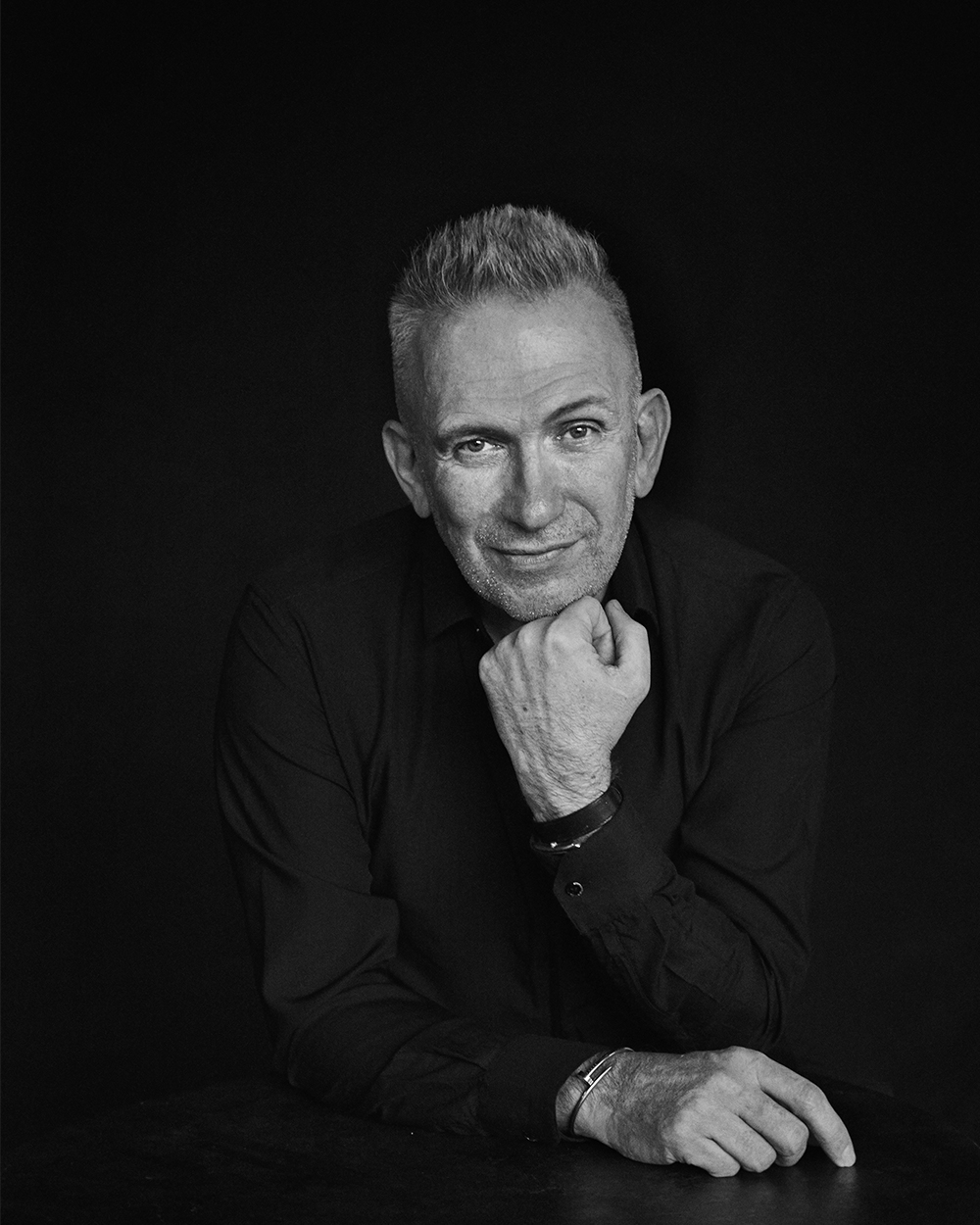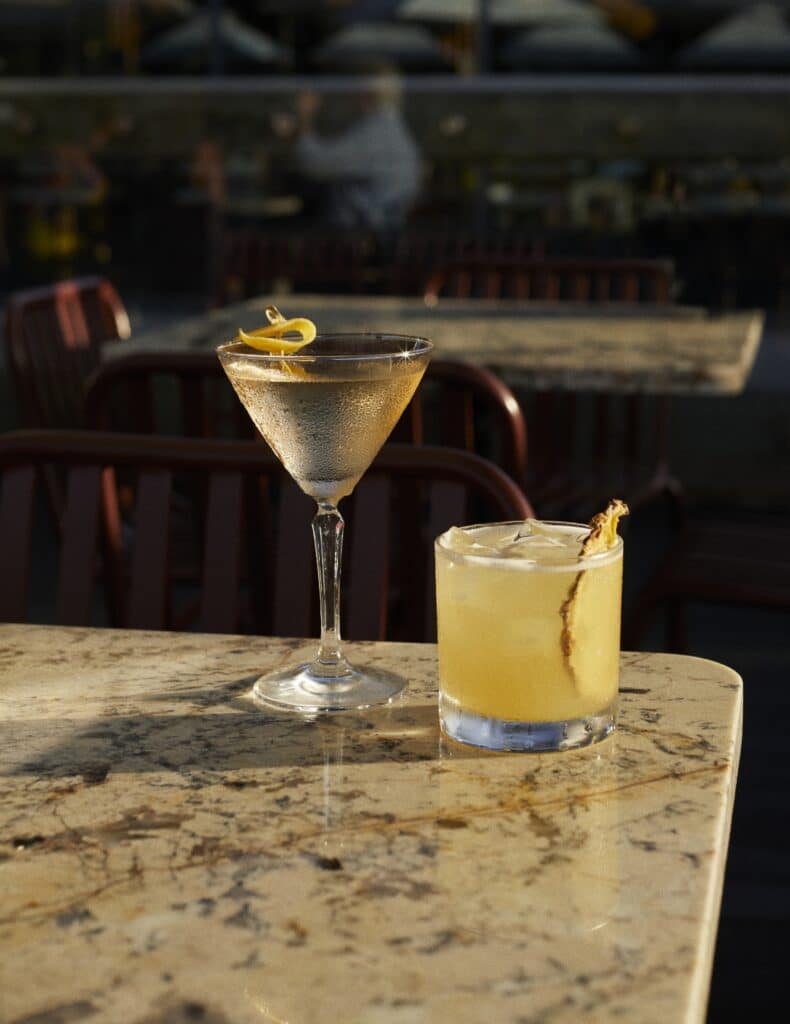As the curtain goes up on the Auckland Arts Festival’s headline Snow White ballet, the designer showman shares what he’s learnt from a fashionable life in the spotlight.
France’s bad boy of fashion Jean Paul Gaultier has always loved a party. That’s why when he decided to retire on the eve of his 50th anniversary in the industry, he staged his
own funeral for everyone to enjoy.
The provocateur’s last Paris haute couture showcase, spring 2020, opened with Boy George’s stirring rendition of ‘Back to Black’ as six masked pallbearers danced a sleek black coffin onto the stage. Supermodels of shows past, Erin O’Connor, Estelle Lefébure, Yasmin Le Bon and more, congregated in veiled mourning as Karlie Kloss, wearing a wreath bearing the words ‘fashion for life’ in French, creaked opened the casket.
To understand this final act, we must go back to Jean Paul’s dramatic start. From a young age, the couturier was captivated by theatrics; attending the ballet with his grandmother at the Théâtre du Châtelet – the same cavernous stage where his ultimate couture collection took a bow. His most iconic designs, Madonna’s conical bras for her ’90s Blonde Ambition tour, were first prototyped when he was playing dress-up with his teddy bears. A particularly pointed pair appeared atop the couture coffin, which opened to reveal his last first look, a sweetly subversive baby doll dress.
When he was a little older, Jean Paul’s love of a good show, and a lingerie leitmotif, continued as he sketched the costumes of the ladies of the Folies Bergère he’d seen on TV. On his 18th birthday, he was hired as an intern by the forward-thinking Pierre Cardin off his drawings alone. Here he was taught the power of design freedom – and promptly forgot about his school exams.
The Parisian prodigy went on to placements at Jacques Esterel and Jean Patou, and returned to Pierre Cardin for two swift years, before showing his debut collection in 1976. He made the move official by opening his design house with ready-to-wear in 1982 and he added his haute couture offering in 1997. Couture is a favourite of the designer, who has been focusing on it since halting his mainline six years ago. “I think the fact that I have stayed free and that I could follow my passion is the secret of my longevity,” muses Jean Paul over email to Fashion Quarterly as he finesses his final preparations.
To celebrate such a momentous occasion, Jean Paul created more than 250 looks that referenced and remixed his haute-couture-meets-street design aesthetic – from deconstructed peach-coloured corsetry to signature striped matelot sweaters paired with tilted sailor caps and playful gowns that called for serious attitude. Lasting over an hour, the show was a testament to the breadth of his imagination and irreverence, which long ago earned him the nickname of enfant terrible. Who else could be taken so seriously by chuckling critics?
Of all the looks, only 50 could be called new. The rest were made with found items and upcycled materials from the Jean Paul Gaultier archive, including tailored clothing mounted flat on top of trompe l’oeil outfits and bodysuits made from Hermès silk scarves, the latter paying homage to the designer’s successful seven-year tenure at the luxury brand from 2003.
Jean Paul salvaged materials when starting out, and now after cycling through countless fashion seasons the 67-year-old was acting out of tact. “I think that there is too much of everything. There are more clothes than people to wear them. In the moment of crises like today, instead of recycling we are producing even more,” he writes. “We as designers have an obligation to follow what is happening in society and to show it through our design, so I think that recycling is a great challenge at the moment, but I have always done it.”
A man of many firsts, Jean Paul championed diversity and gender fluidity before they were labelled as such. Fittingly for his finale, he held an open casting to find all kinds of beautiful people to walk alongside his famous friends. “I haven’t done it consciously, it was just that I wanted to reflect the society as it was,” he explains. “I would also have girls who hang around Les Halles and who had a sense of style but who were not necessarily the model size.”
Throughout his career, Jean Paul captured character. His perfume line, collected in the frosted glass figures of men and women, perhaps depicts this talent best. This year, his Le Male cologne turns 25, while the playfully feminine Classique is pushing 30. “That is quite extraordinary when we look at today and the speed with which everything changes. I think that the design and the scent are still at the vanguard even after all these years and that the public recognises that.”
Which other designers can play their own theme song, like Jean Paul’s ’80s dance track ‘How to Do That?’, during their runway shows? Jean Paul chased the zeitgeist, with memorable moments including designing the 1000-costume-strong wardrobe for retro-futuristic film The Fifth Element, co-hosting cult TV show Eurotrash, and serving as Diet Coke’s creative director in 2012. When asked about his myriad inspirations, he simply replies: “When I was starting in this business, I never thought that I will have the opportunity to meet and work with the people I admire. I have been very fortunate.”
While pop culture is his obsession (his current favourite TV shows are Dancing with the Stars and The Voice) Jean Paul has been drawn back to the stage time and again. More recently, he has designed the decadent costumes for the Snow White ballet, which arrives at the Auckland Arts Festival in March, and has created a travelling musical, Fashion Freak Show, based on his cacophonic career, complete with costumes of his most iconic designs.
While Jean Paul is hanging up his haute couture hat, his namesake line will continue under a new concept. For the fashion crowd at the Théâtre du Châtelet, it is the end of an era still. Among them, former intern, and now creative director of Louis Vuitton, Nicolas Ghesquière, and elusive former design assistant Martin Margiela, of cult brand Maison Margiela, paid their respects.
When Jean Paul finally came out to meet their cheers, he was full of smiles as the rest of the cast were full of tears. While fashion has lost one of its greatest showman, for now, he can rest with some kind of peace of mind. “I didn’t say I would do this job because we can change the world. No, I only wanted to do it because it was… at the same time, to play a game, like a charade,” he writes. “I realised through my work people can maybe listen to me, or accept me in some way.”
Snow White, with costumes from Jean Paul Gaultier, headlines the 2020 Auckland Arts Festival. Showing March 11–15. For tickets, visit ticketmaster.co.nz.
This article originally appeared in Fashion Quarterly Issue 1, 2020 – on sale now.











